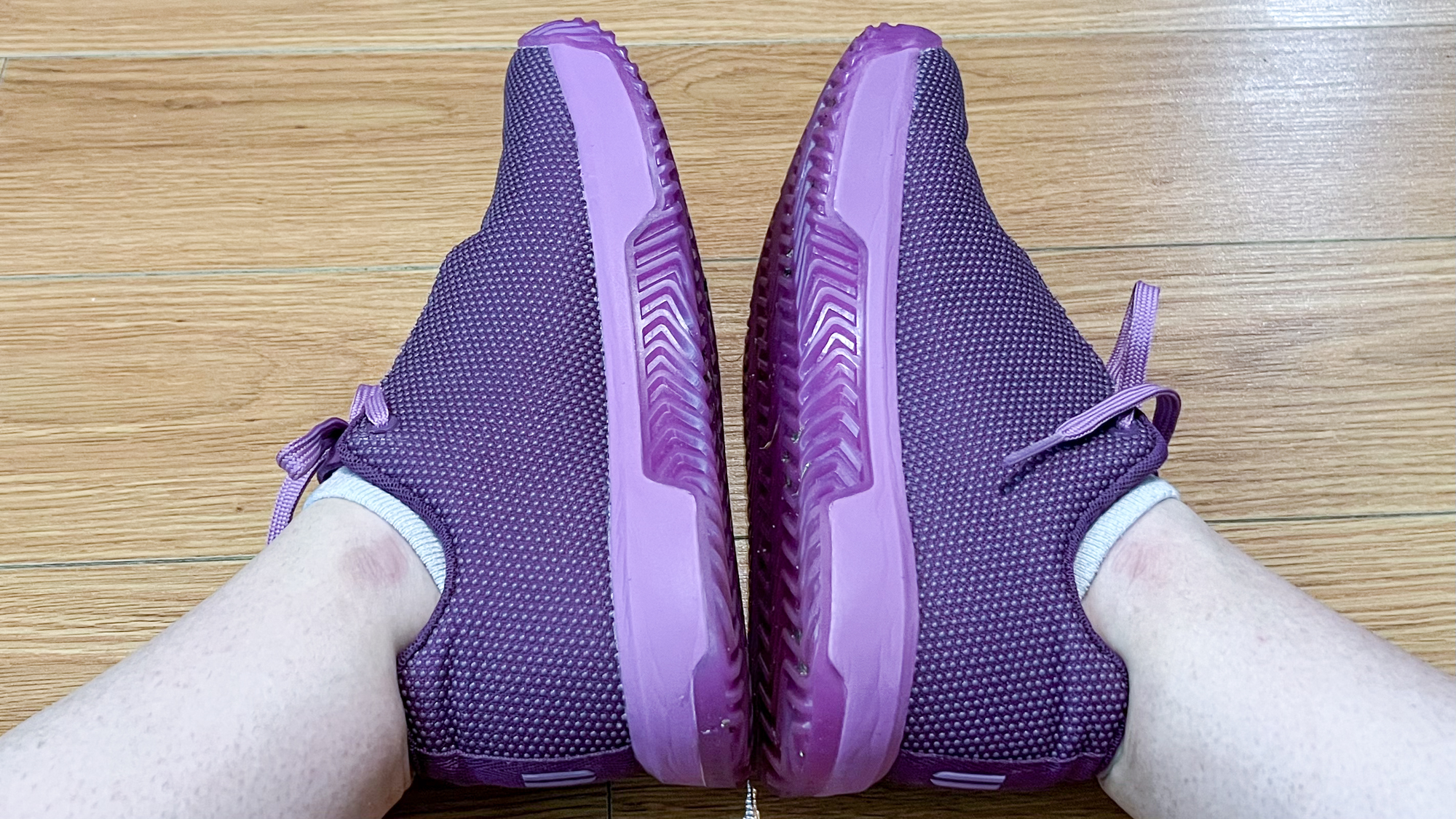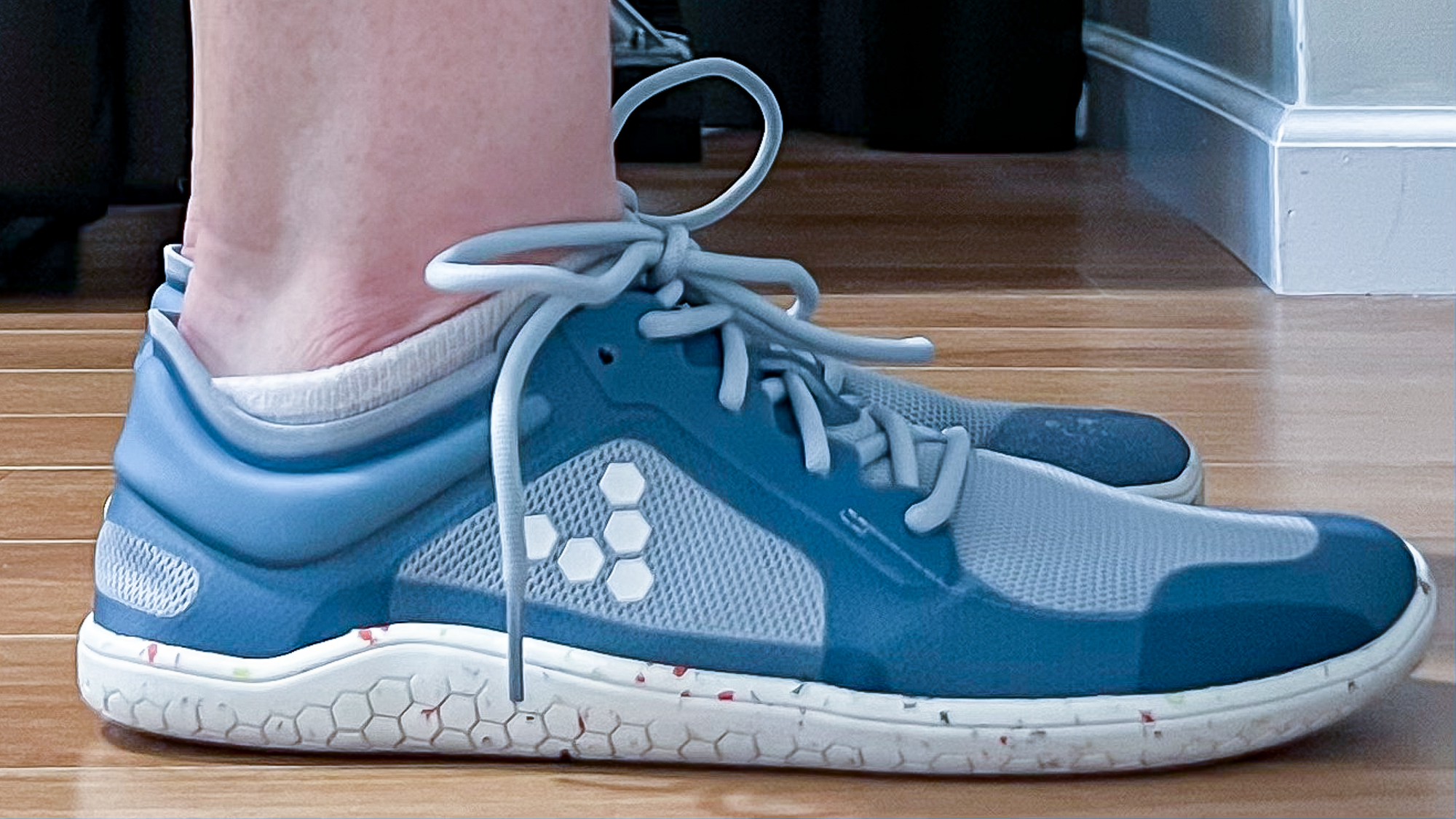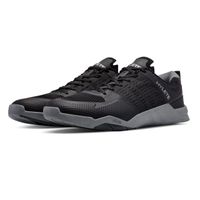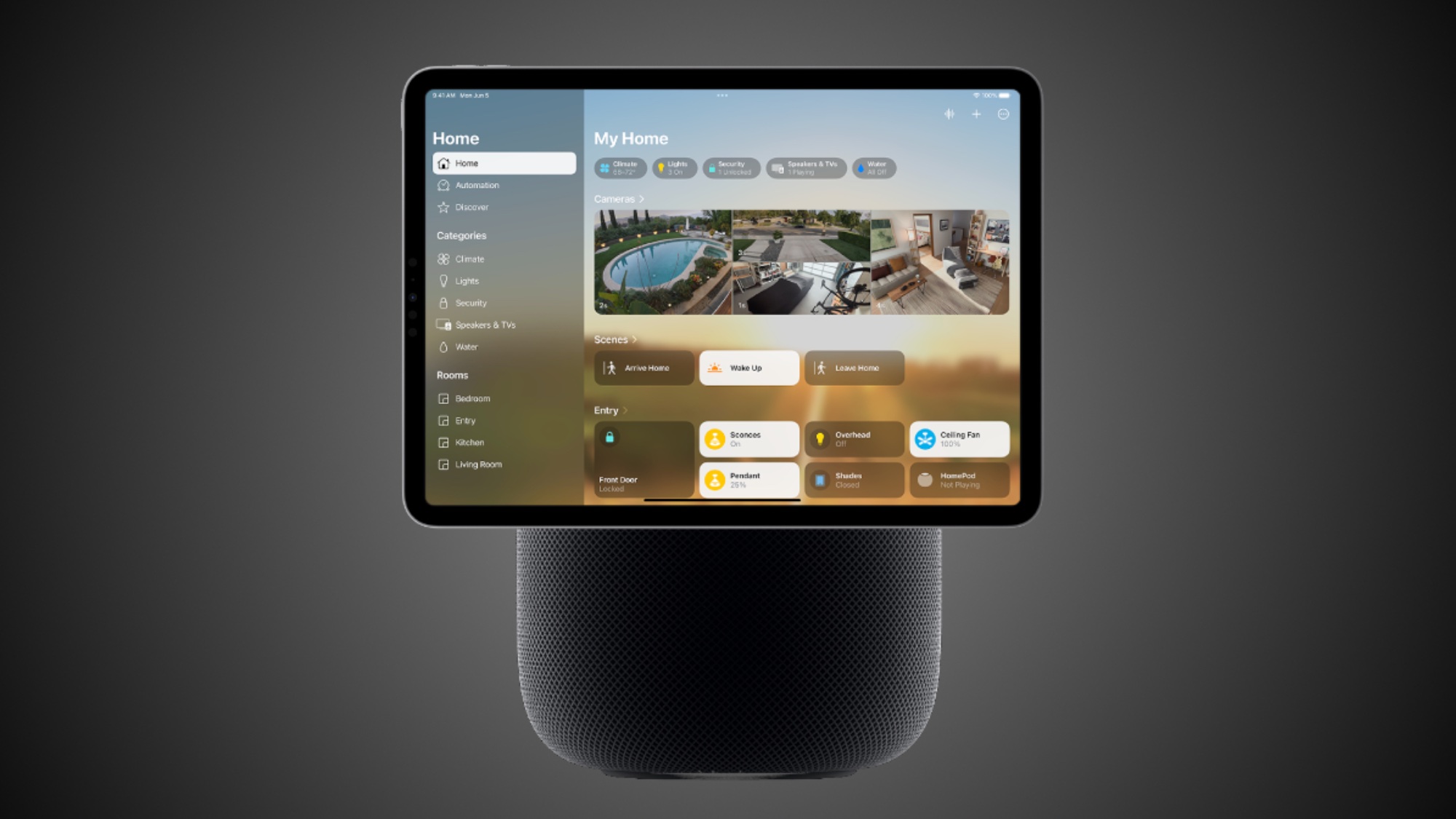Best cross training shoes 2025: tried, tested and reviewed by personal trainers

Best cross training shoes
I train in the R.A.D. One V2 shoe for CrossFit, which is our overall pick for best gym shoes. It's lightly cushioned, grips ropes well and has solid foot-ground support, making it a winner in our books.
The best cross training shoes are ones that deliver comfort, versatility and durability. They should stand up to fast transitions between your workouts, whether you enjoy CrossFit-style workouts, Hyrox training, general weightlifting, or a combination of all three.
If you're unsure where to begin, we're here to help. Tom's Guide testers are qualified personal trainers and have years of experience testing the best cross training shoes from leading brands in the industry, including Nike Metcon, Reebok, R.A.D. and Nobull, to bring you the best in class, whatever your budget, ability, or workout style.
During many months of testing, and alongside contributing personal trainers, we mixed up workouts to include weightlifting, HIIT, running, and free weights, looking at the pros and cons of each shoe, how it was made, and why you should or shouldn't buy it.
We've also spoken to CrossFit instructors and athletes to find out how they choose the best cross training shoes for their sports to help inform our decisions. Read on for our full round-up below, plus tips on how to buy, products that just missed out, and all your cross training shoe questions answered.
Review panel

Sam Hopes is Tom's Guide's fitness editor and a qualified level 3 trainer. Sam regularly attends CrossFit and Hyrox classes and has many years of experience testing the best cross training shoes to wear during different types of workouts.
She has firsthand experience working with brands like Nike and Reebok, even visiting top facilities to test shoes before launch, including the launch of WIT X Puma Fuse 2.0, Nike Metcon 9 and 10, and the Under Armour Academy.

Jennifer Rizzuto is a freelance writer and NASM personal trainer based in Long Island, NY. She covers various fitness-related topics and reviews for Tom's Guide and has tested some of the best cross training shoes on the market to contribute toward our guide.
The best cross training shoe we recommend in 2025
Why you can trust Tom's Guide
Best cross training shoe overall

R.A.D. One V2
Our expert review:
Specifications
Reasons to buy
Reasons to avoid
✅ You enjoy CrossFit, especially gymnastics
✅ You value comfort, flexibility and stability
❌ You're on budget
❌ You have wide feet
The R.A.D. One V2 cross training shoe supports CrossFit and all-around gym training. The model is making waves as the shoe of choice among the CrossFit communities by instructors and members alike. Everyone I speak to is choosing these shoes, and they look darn good on, as well, with a variety of colorways to choose from.
The brand uses springy SwellFoam, which is a light EVA midsole technology partly made from sugar cane, in an attempt to be more carbon-friendly, which gets a big tick.
The shoe is superbly cushioned for plyometrics yet stabilized for lifting, and more durable than its predecessor, the OG One model, for rope climbs. In the words of R.A.D., "This shoe is tuned for performance. "
I love that the V2 upgrade is more flexible with a reinforced toe bumper (helpful during toes to bar) and a herringbone rubber outsole for added durability. I can still happily lift in these shoes as well, thanks to the TPU heel clip and a bold midfoot wave design that tapers into the forefoot flex zone, making dynamic movements easier.
The wave wrap also means rope climbs are more supported, giving me the extra grip I need on the ascent without providing too much of a braking system on the descent.
So let's talk about fit. The shoes wear like the Under Armour Flow Dynamic training shoe but with unparalleled cushioning and without the bootie fit of the UA Flow. It has also been stabilized for weightlifting, and upon slipping the R.A.D. One V2 on, you get a sense of true grounding.
You won't get as much toe splay and foot-ground connection as, say, the Metcon 9 or the Puma Fuse, but there's a definite sense of connectedness that allows for technical lifting.
There's also ample cushioning in the forefoot, which suits plyometrics. However, they feel quite thick to wear and my feet got pretty warm while breaking them in.
That said, they're super comfortable for most activities. I wouldn't run in them for more than a few Ks, though. CrossFit fanatic? You won't take them off.
Tester: Sam
Best Nike Metcon cross training shoe


Nike Metcon 10
Our expert review:
Specifications
Reasons to buy
Reasons to avoid
✅ You value flexibility and stability in equal measures
✅ You love Metcons
❌ You need plush cushioning
❌ You plan to run in them
I tested the Nike Metcon 10 before its official release and rated the shoe far above the Metcon 9. We're back, baby.
Metcon stands for stability, grip, lockdown and mobility, and with this iteration of the shoe, the team went back to the foundation of what makes Metcon great, listening to the voices of athletes.
I really appreciate grip in a cross training shoe, and it’s not achieved that easily. The full-length rubber outsole holds its own with plenty of traction, and the pronounced rubber wrap rope guard present in the Nike Metcon 9 (which divided crowds) has been pared back.
I’d argue the entire cross training community was collectively pretty vocal about the 9s' versatility — great as a stability shoe for lifting heavy weights, but not for much else. The 10 is much more pliable and flexible around the forefoot, with a wider toe box to make you feel a lot freer, but it still retains the Hyperlift plate for lifting.
The Metcon 10 features a wider forefoot, which allows for better toe splay during lifts. I sized up because I like to exercise in sports socks, but even so, the experience of putting on the 10s feels much less restrictive.
The Nike team minimized the Hyperlift plate and firmed up the foam in the heel, including dual-density ReactX midsole cushioning. It's lighter with better energy return; you've got a stable base and better bounce.
Not the comfiest cross training shoe out there, and many Crossfit instructors I've spoken to have opted for the R.A.D V2 shoe (also on our list) over this one. Still, for Metcon purists, this model gets a big tick from us.
Tester: Sam
Best classic cross training shoe


NOBULL Trainer+
Our expert review:
Specifications
Reasons to buy
Reasons to avoid
✅ You have wide feet
✅ You love the NOBULL range
❌ You need arch support
❌ You need a lightweight shoe
The NOBULL Trainer+ features a wider and less tapered outsole, which is great in a few different ways. For one, you’ll get a little more surface area to work with and, in turn, a greater degree of stability and grip. This helps work with heavier loads, where you’ll need the solid base and decent grounding that the Trainer+ provides.
This wider outsole also means a not-so-dainty foot will get some additional wiggle room. While the Trainer+’s silhouette seemed slightly big for my comfort level, a male colleague who owns his pair reports that they fit him better than any other model of cross training shoe (and I definitely wouldn’t consider his foot dainty).
Another big plus for the Trainer+’s outsole is a deep herringbone tread pattern that transitions well for outdoor workouts. I laced them up for functional training in the backyard and was pleasantly surprised at how well I found my footing in the soil.
That deep herringbone tread creeps up along the inner midsole, which is great news for those who like a little masochism (rope climbs) with their exercise routines. And with a durable one-piece upper mesh construction, you won’t have to worry about any impacts from the elements.
There’s no doubt that the Trainer+ is a solid shoe, however “solid” often translates to “heavy,” and that’s, unfortunately, the case here. The thick outsole is stable but clunky — it felt like I was wearing a hiking boot when attempting a run or a HIIT workout. You won’t find too much arch support, despite a cushioned midsole. My insanely flat feet were screaming at me after about an hour with them on.
Tester: Jennifer
Best cross training shoe for barefoot


Vivobarefoot Primus Lite III
Our expert review:
Specifications
Reasons to buy
Reasons to avoid
✅ You value barefoot training
✅ You prefer a thin and flexible outsole
❌ You're on a budget
❌ You plan to do HIIT
Some powerlifters swear by Converse Chuck Taylors (or “chucks”) as their lifting footwear of choice, while others prefer to skip the shoes altogether. The Vivobarefoot Primus Lite III is a happy medium between the two, protecting your feet without blocking a proper connection to the floor — a necessity for effective (and safe) resistance training.
Slipping on the Primus Lite III felt kind of like slipping on a pair of old-school water shoes — the incredibly light, flexible rubber outsole and the thin mesh upper molded to my feet almost instantly. This combined with the Primus Lite III’s wide toe box and zero drop made me realize why the word “barefoot” is built into the brand name.
That “barefoot” feel is what makes the Primus Lite III so perfect for heavy lifting. The lack of abundant cushioning you’d find in most cross training shoes means you can drive every part of your foot — from the tips of your toes to your heels — into the ground.
High levels of stability and proprioception are crucial when pursuing maximal strength, and wearing the Primus Lite IIIs I could completely ground myself when attempting any high weight-low rep program.
Vivobarefoot often manufactures its footwear from sustainable and recycled materials, and the Primus Lite III is no exception. With Vivobarefoot’s “Revivo” program, you can return your worn-out shoes to be refurbished and resold (or recycled, if they’re dead). So you can work towards your next strength goal and help the planet at the same time. Win-win.
For a minimalist shoe, the Primus Lite IIIs are pretty pricey — one of the most expensive on our list. And while barefoot devotees will say that the Primus Lite IIIs can be worn for any activity, I wouldn’t lace them up for a run or any high-impact exercises (not before enrolling in Vivobarefoot’s “fundamentals” course, anyway).
Tester: Jennifer
Best cross training shoe for weightlifting

Reebok Nano X5
Our expert review:
Specifications
Reasons to buy
Reasons to avoid
✅ You value heel stability
✅ You prioritize weightlifting
❌ You enjoy running
❌ You need plenty of versatility
The Reebok Nano X5 cross training shoe made it into our line-up for being the best in the Nano series yet. Like a footballer finally finding their feet at a new club. Reebok has built a spacious “little bit of everything” cross training shoe that steers away from the more aggressive Nano X4 design and much closer toward a shoe we’d choose for lifting and HIIT.
The Flexweave upper design is my favorite upgrade, making the shoe feel more flexible and pliable. As a result, it feels more natural to move and more responsive to plantar flexion and dorsi flexion of the foot.
The CMEVA compression molded foam provides ample cushioning without losing the stability the Nano series is famed for. A polyurethane NanoShell provides “extra defense” to prevent midsole abrasion and support for your feet.
I think Reebok has struck the balance well between cushioning and stability. The outsole provides a stable platform with plenty of grip and a neutral feel — the 7mm drop has been retained, which is 1mm more than the R.A.D One shoe.
While lending itself well to functional lifting and cross training, this shoe wouldn’t suit runs over 1 or 2km, because there's a lack of arch and minimal heel lift. If you plan to do a Hyrox or more than 1km of running, this is absolutely not the one for you. The sturdy design might have Olympic lifters rejoicing, but for anyone running a distance, other models on the list have your back.
Tester: Sam
Best cross training shoe for wide feet

Puma Fuse 2.0
Our expert review:
Specifications
Reasons to buy
Reasons to avoid
✅ You love a good connection between shoes and floor
✅ You like a spacious shoe that feels light and airy
❌ You prefer cushioning
❌ You plan to run a lot
The Puma Fuse 2.0 training shoe is worth a shout-out on this line-up. The Fuse 2.0 offers plenty of stability, a great fit and traction to provide even better performance.
I've been training for Hyrox wearing the Puma Fuse 2.0 to test out their versatility, and while I wouldn't do a Hyrox in them, given the competition and how capable the Puma Deviate Nitro 3s are, they have proved superb for grip and stability.
As put by Puma, these shoes are engineered for strength with a no-sew design that increases durability. The FUSE Flex metatarsal flex grooves improve foot splay for a solid connection between foot and floor during weight training. Alongside a TPU heel clip, the WIT collab version of the shoe also houses a slick WIT logo and reflective form strip and eyestay.
During testing, I found the PROFOAM midsole cushioning offered a soft bounce and supportive feel without elevating my foot too far, which gave me a solid footing during strength training workouts.
The durable rubber outsole has proved worthy in all conditions from CrossFit classes to outdoor training and gym workouts, and the toe box offers plenty of room for my feet to breathe and for my toes to spread during lifts like deadlifts or squats.
The 4.0mm drop still allowed me to keep enough awareness between the floor and body to feel what my lower body was doing and the encompassing textile upper gave a secure fit.
However, I experienced some slippage around the heels during rowing which I couldn't escape even with a tight pull on the laces. Although I could get through rope climbs, other models in this line-up can definitely do the job better.
I love that the Puma Fuse 2.0 balances comfort and foot-ground connection, but I would size down on this one, as they can feel quite loose.
Tester: Sam
Best cross training shoe for court sports

Reebok Nano Court
Our expert review:
Specifications
Reasons to buy
Reasons to avoid
✅ You play court sports
✅ You value bouncy comfort
❌ You exercise on tarmac
❌ You need grip outside of court sports
Launched as a court shoe specifically for Pickleball, tennis and Padel, the Nano Court is dubbed the "ultimate performance court shoe," focusing on stability, durability and grip.
Despite its court shoe credentials, this best-in-class addition to the Reebok Nano family can easily translate to cross training. I've worn the shoe across various CrossFit classes so far, and have barely any grumbles to speak of.
I love the built-in tongue which offers a booty-esque feel and secures the foot. However, I'd recommend ordering at least a half size up as the fit comes up tight. The Flexweave Pro upper is durable and robust and the ToeTection Guard offers protection from toe drags during workouts or on court.
Then you've got Griptonite rubber outsoles for multidirectional traction on the courts. Where the shoe suffers slightly is outdoors in wet weather, though it is positioned solely as a court shoe and Reebok hasn't designed it for the roads.
Where this shoe seriously excels is the bounceability factor. Floatride Court Foam offers the perfect amount of cushioning in the heel and forefoot, making this shoe perfect for explosive movement on or off court and during plyometrics. The design retains enough stability for lifts if you do choose it as a cross training shoe without the solid feeling you get underfoot with models like the Nike Metcon range.
If you want a spring in your step, this is the shoe for it. I practically bounced through my last set of burpees.
Tester: Sam
Best cross training shoe for Hyrox

Puma Deviate Nitro 3
Our expert review:
Specifications
Reasons to buy
Reasons to avoid
✅ You enjoy combining functional workouts with running
✅ You value cushioned midsoles
❌ You enjoy heavy weightlifting
❌ You're on a budget
I recently competed in the mixed doubles category at London Hyrox, so finding a competent shoe to handle the event has been paramount to my training. The Puma Deviate Nitro 3 is the official shoe of Hyrox and the first choice among many of its athletes. Given that the Nitro could be positioned primarily as a running shoe, you might be surprised that it's in our line-up for best cross training shoes.
Let me tell you, this sneaker exceeds expectations and then some. The engineered mesh upper is flexible and sits low around the ankle, giving me plenty of freedom for many of the stations found in the Hyrox event. Nitrofoam provides superior responsiveness and cushioning while maintaining a lightweight feel, and PWRPlate carbon fiber plating stabilizes the midsole and provides maximal energy transfer.
Thanks to the Deviate Nitro, I could sled push 152kg without losing any grip or momentum at all. Plus, the shoe handled 8km of running so well that I felt like I was bounding along the track. Given the cushioning, I was a little concerned I wouldn't get enough stability during lunges and wall balls, but these weren't an issue either and I had zero chafing or sore points during or after the workout.
They're recommended for neutral pronators and offer 10mm drop and 39mm stack height, which is worth considering if you plan to use them regularly for hybrid workouts. I've since clocked a 5km PB in them, too, so it looks like this shoe is becoming a staple in my shoe cupboard.
My colleague tested the Puma Deviate Nitro Elite running shoe and said: "I loved running in the Puma Deviate Nitro Elite 3. It’s an excellent racing shoe and comparable to the best on the market, while also being cheaper than most."
Tester: Sam
Also tested
We've tested many cross training shoes for Tom's Guide, but not all of them made it into the guide. If you're curious which ones just missed out, consider checking out these below.
Reebok Nano X4 (★★★★☆)
We've just replaced the X4 with the X5 in our guide, given that the latest Nano shoe has finally found its feet and delivered true versatility. But if you're an out-and-out lifter, the technical stability and heel rigidity of the X4 will be your best friend for years.
Innov8 F-Lite Max cross trainer (★★★★☆)
The Innov8 brand brings you their latest high-performance functional shoe. It has a 6mm drop, Boomerang footbed, ROPE-TEC and TPU heel stabilizer. The forefoot is a bit too wide for me, but perfect for those with wide feet, and the fit is true to size. Plus, everyone in the gym could see me coming from a mile off. I love the blend of stability, grounding and soft cushioning, and while they narrowly missed out on a top spot, they're worth consideration.
Ryka Devotion XT cross trainer (★★★★☆)
Jennifer tested the Ryka and loved the fit for women. She rated the width options, 8mm drop and neutral support, advising wearers to consider the shoe for dance, cardio, walking, HIIT and light resistance training.

Hylete Circuit II cross training shoe (★★★★☆)
Jennifer also tested the Hylete Circuit II shoe and loved the versatility on offer. Drop options include 0.4 and 6mm, 3 insoles, a non-tapered toe box for a more natural foot position during weightlifting and Vibram outsoles for great traction and stability.
How to choose the best cross training shoes
A post shared by Sam (@hopes_coaching)
A photo posted by on
First, consider your foot shape and size, and the type of exercise you plan to engage in. If you're unsure how you're going to be using your shoe, we've put together some tips for CrossFit beginners and Hyrox beginners. But of course, they aren't the only types of cross training available, even though they're heavily trending up right now.
Cross training can simply mean you enjoy a range of sports and activities and just need a shoe that supports as much of that activity as possible. Maybe you enjoy HIIT classes at your local gym, or more specialist classes like Orange Theory and F45. If you think you might be switching between weights, running and functional movement, here are a few tips for choosing:
- Toebox: Look for enough space through the toe box that you can splay your feet and get a good sense of grounding underfoot. If you feel cramped, you might find it more difficult to complete technical lifts or move properly
- Cushioning: You'll need enough cushioning that you can run without compromising stability. That's why running shoes and walking shoes are a no-go. There's no one-size-fits-all approach, so find what works for you, but if you struggle to maintain balance, think about less cushion
- Stability: This depends on how much technical weightlifting you think you might be doing. For more technical classes like Olympic lifting, consider greater stability and a rigid midsole and outsole to support you. A more flexible midsole and forefoot will support movements like box jumps and burpees better, but you want to feel well-connected with the ground with ample toe splay and less cushion
- Drop: Cross training shoes have a drop, which means an elevated heel, and stable outsole and midsole construction. You're looking at somewhere between barefoot shoes (no drop, think the Vivoactive Barefoot brand in our guide) and weightlifting shoes. Weightlifting shoes have a considerable drop to support anatomical positioning and lifting performance but are unsuitable for cross training.
If you enjoy activity that involves high-intensity training, running, and lifting weights, then we recommend selecting a cross training shoe with midsole and lateral support, light cushioning, paired with a higher heel-to-toe drop.
If you prefer Olympic lifting, you'll want to buy specific weightlifting shoes with a higher heel drop and rigid stability, helping to position your foot optimally for barbell lifts. The Nike Romaleos 4, NOBULL Lifters and Adidas Powerlift series are good places to start the search.
How we test the best cross training shoes
Each pair of cross training shoes has been worn for at least several months to years across a wide range of activities, including:
- Light, moderate, and heavy resistance training
- Olympic barbell lifting
- Walking and running
- Hyrox training
- HIIT
- CrossFit
- Outdoor bootcamps
Each shoe was tested on a rubberized gym floor, concrete, and soil, in wet and dry weather. We've also worn the Nike Metcons during WIT HQ testing at the launch of the latest model, the 9, in London, and the UA Flow Dynamic shoe went through aggressive fitness testing at the Under Armour Academy, London.
We take various pairs to CrossFit classes for everyday wear. All cross training shoes have been rigoriously evaluated for materials, sustainability, comfort, performance, versatility, durability, and other usability factors.

Q&A
What shoes are better for CrossFit?
Cross training shoes are designed with CrossFit workouts in mind, but some are better built for it. Workouts tap into functional training, meaning you'll pull, push, lift, jump, squat and climb, so your shoe will typically be designed to support these types of movement.
If you're a diehard Metcon wearer, the Nike Metcon 9 is the best-in-class Metcon shoe we've tested and retains the popular rope guard. For all-round versatility, it has to be the Reebok Nano Gym, which is the latest Reebok release to hit the cross training community. We love how bouncy the shoe feels, but you can happily still lift heavy weights in the shoe.
My personal go-to is the R.A.D One. They are so comfortable and suit CrossFit perfectly. That said, the R.A.D One V2 is becoming a firm favorite for me and I'm choosing the shoe over the OG model more and more.
More recently, I've taken to the Puma Deviate Nitro 3 running shoes for Hyrox training, as they support the 8km runs much better and still have incredible grip and stability.
What's the difference between cross training shoes and weightlifting shoes?
Cross training shoes are built for versatility, meaning they're typically built for agility and multidirectional movement. That said, you wouldn't wear them for long runs. Weightlifting shoes are tailored to Olympic lifting and, as suggested, lifting heavy weights.
Your shoe must be able to maximize energy transfer and proffer stability when you generate force. That's why cross training shoes suit anything from a rope climb to short runs, lifts and plyometrics. In short, you should be able to move from one activity to another without a problem.
Weightlifting shoes are constructed specifically for heavy lifting, with an elevated heel, wider toe box and very rigid outsoles for stability. Technical lifts adopt a very specific movement pattern, so you'll need a shoe with a reliable foot-ground connection.
Weightlifting shoes maximize power output, efficiency and performance. Hence why some lifters go barefoot or choose a pair of Vans or classic Converse Hi Tops.
We cover the difference in much more detail in our cross training shoes vs weightlifting shoes guide.
Are cross training shoes worth it?
100%. Cross training shoes could save you hundreds of dollars if you enjoy a variety of sports and activities, as most models cross over seamlessly. However, if you enjoy walking or running, you'll want to invest in a pair of the best running shoes and walking shoes because they'll offer specific support for the activity, especially longer efforts, hikes, or trail running.
If you have poor ankle stability, for example, you might choose a pair that supports your gait and pronation.
For shorter runs and walks, cross training shoes work well. For example, you can wear them during Murph CrossFit workouts, which include a 1km run on either side of the workout. We wouldn't recommend them for much further distances as the shoes are built for stability and grounding during weightlifting exercises, which means you get less cushioning.
Get instant access to breaking news, the hottest reviews, great deals and helpful tips.

Sam Hopes is a level 3 qualified trainer, a level 2 Reiki practitioner and fitness editor at Tom's Guide. She is also currently undertaking her Yoga For Athletes training course.
Sam has written for various fitness brands and websites over the years and has experience across brands at Future, such as Live Science, Fit&Well, Coach, and T3.
Having coached at fitness studios like F45 and Virgin Active and personal trained, Sam now primarily teaches outdoor bootcamps, bodyweight, calisthenics and kettlebells.
She also coaches mobility and flexibility classes several times a week and believes that true strength comes from a holistic approach to training your body.
Sam has completed two mixed doubles Hyrox competitions in London and the Netherlands and finished her first doubles attempt in 1:11.



